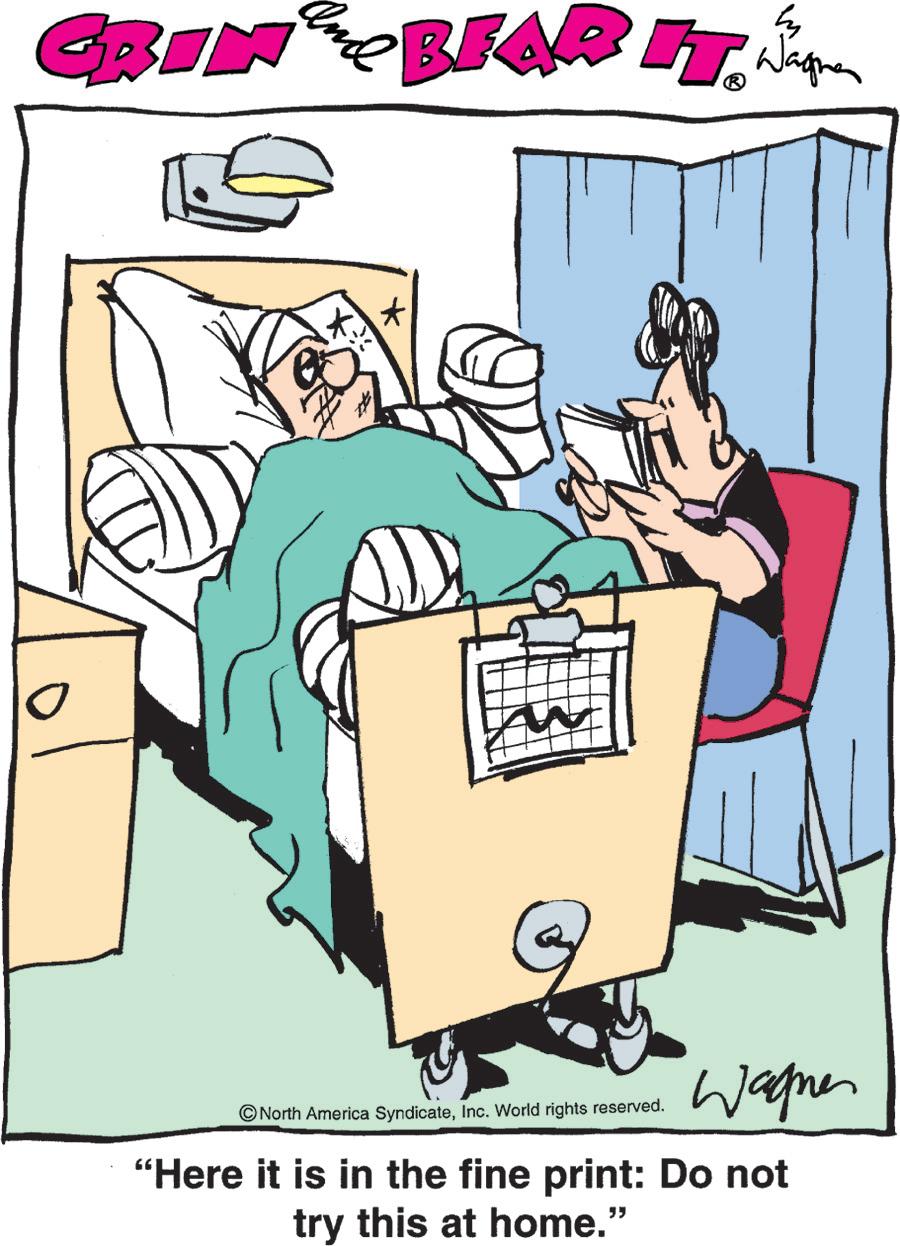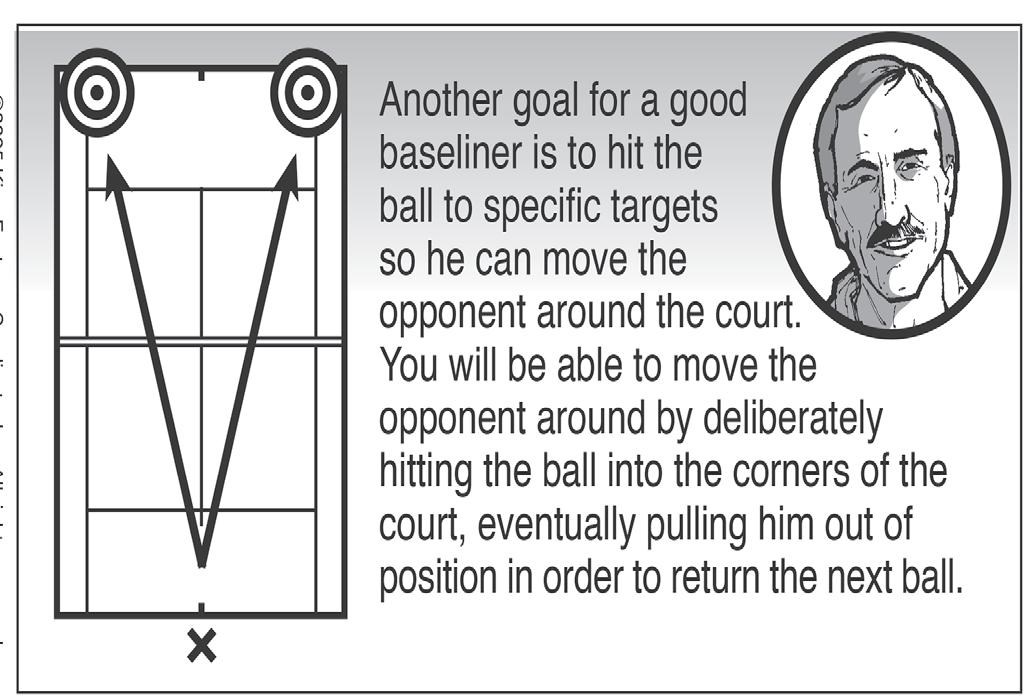























by Janet Spencer
If you own a dog you'll understand how these household pets can become so close-knit with the people who care for them that they actually become part of the family. And sometimes these animals can amaze us with displays of intelligence, reasoning and bravery that we never thought possible. Such is the case with the following stories. Read on as Tidbits recognizes some of these remarkable dog heroes!
• Mary Lou Wells was washing dishes at her Kingston, Tennessee farm while her three-year-old daughter Keira played outside in the back yard. Suddenly the family’s three collies started barking urgently. Looking outside, Wells was alarmed when she couldn't see Keira in the yard. She ran outside to see her daughter toddling halfway up a hill. Then to her horror she also saw that the four horses normally locked in the paddock were running through the gate, which they had somehow managed to open. Wells saw that Keira was standing directly in their path. She ran toward them waving her arms screaming “Whoa!” at the top of her lungs, but they only ran














(Answers on page 16)











1. GENERAL KNOWLEDGE: Who was Time Magazine’s First Man of the Year in 1927?
2. MOVIES: Who was the male lead in the film “Risky Business”?
3. LITERATURE: In which novel does the character of Emma Woodhouse appear?
4. LANGUAGE: What does the acronym “sonar” stand for?
5. TELEVISION; What was the name of the Dukes’ car on the show “The Dukes of Hazzard”?
6. HISTORY: The first atomic submarine was built in which decade?
7. GEOGRAPHY: What modern-day country is in the area known in ancient times as Lusitania?
8. MEDICINE: What disease is caused by a deficiency of Vitamin A?
9. U.S. PRESIDENTS: Which U.S. president’s image appeared on a dollar coin in 1971?
10. MATH: What does the symbol “r” stand for in geometry?

If you’re a Harry Potter fan, the fictional game of quidditch is a familiar one to you. But did you know that a genuine team sport has developed from the fantasy films? Follow along as Tidbits outlines the rules of the game, a sport invented by the creative imagination of author J.K. Rowling.
• Rowling invented the make-believe sport for her book series, with the game appearing for the first time in the 1997 novel Harry Potter & and Philosopher’s Stone.
• The players in her book attempt to score goals against the opposing team while defying the law of gravity by flying through the air astride broomsticks. The playing field is a large oval with three ring-shaped goals of differing heights. Each team has seven players: three Chasers, two Beaters, the Keeper, and the Seeker.
• There are three balls in the game, the leather quaffle, which is used by the Chasers to score goals by throwing through the hoops, the Bludger, which is used by the Beaters to throw at the opposing players to hit or distract them, and the Golden Snitch.
• The Snitch, the smallest ball of the match, is a golden sphere attached to two silver wings for flight. Its point value is the highest at 150 points, and can only be caught by the team’s Seeker. Catching the Snitch marks the end of the game. In the fantasy novels, Potter acted as the Seeker of the Hogwarts school team.
• Harry Potter’s very first quidditch match pitted his Gryffindor team against the Slytherin team.

The final score was 170 points for Gryffindor to 60 points for Slytherin. The game commenced following the words of Madam Hooch, “Mount your brooms, please.”
• Inspiration for the game of quidditch was partially provided by some ancient European games of legend. The German game of Stichstock also called for mounted broomsticks and attempting to pierce an inflated dragon bladder. The Irish played Aingingein astride broomsticks amidst a course of burning barrels, while the Scots played Creaothceann, a violent game that involved players strapping cauldrons to their heads. A large number of boulders were released and players riding the broomsticks tried to catch the highest number of rocks in their cauldrons.
• Vermont’s Middlebury College created the actual team sport of quidditch in 2005. While the players aren’t flying wizards, the principle of the game is basically the same.
• Two teams of seven players each straddling broomsticks meet each other on a rectangular field (unlike the fictional oval) and attempt to pass a ball through the defenders’ hoops, while keeping their opponents from passing it through their own.
• In order to keep the real sport separate from the fictional one, today’s game is often referred to as “muggle quidditch.” This takes its nickname from a person in the Harry Potter series with no magical abilities being called a “muggle.”
• The real-world sport, a combination of the elements of rugby, handball, dodgeball, and tag gained popularity very quickly, and just two years after its creation, the first Quidditch World Cup took place with Middlebury capturing first place.
• There’s been a World Cup competition every year since. There is an official governing body for the sport known as the International Quadball Association, which must sanction all events. The United Kingdom even has a Quidditch professional league.
• The word “quidditch” was added to Oxford dictionaries in April 2017.
Week of March 23, 2025
Dog Heroes: (from page one)
around her. At the last second the lead horse jumped over the child, knocking her to the ground. The three other horses were close behind and picking up speed. At that point the three collies sprang into action. Running to Keira’s side, each dog picked a horse and charged at it, barking, snarling and snapping at their legs to head them away from the child. Two of the collies then kept the horses at bay while the third returned to the crying child to lick the blood from her forehead. After getting some stitches and a scolding for leaving the yard, Keira made a complete recovery. The heroic dogs were given steak and ice cream for dinner that night.
• One day while out walking his English setter, Sadie, in Bethpage, Tennessee, Michael Miller suddenly collapsed to the ground from a condition causing heart failure. He was was unconscious, barely breathing and helpless, but Sadie's leash was still snugly wrapped around his hand. Sadie tried to revive him by nudging his head and licking his face. When that failed, the 45-pound dog began tugging and dragging her master towards home. The dog labored for what is estimated to be more than an hour, yanking and dragging his body across a weed field toward their home. Finally reaching a point about 75 yards from their back door, the dog continuously barked and howled until Miller’s wife came out to investigate. He was rushed to a nearby hospital where he later recovered. The doctors agreed that he would not have survived were it not for the amazing efforts of his faithful dog.
• In 1991, 75-year-old Jack Fyfe of Sydney, Australia, was home alone when he suffered a paralyzing stroke, which left him collapsed on the floor and unable to move. He lay helpless,


waiting for someone to discover him. Day after day he waited in agony until he was in danger of death by dehydration as the summertime temperatures climbed above 90 degrees. Fyfe’s dog, a six-year-old mixed breed named Trixie, understood when Fyfe cried out for water. In a brilliant move, she pulled down a towel from the countertop, soaked it in her own water dish, then laid it on her master’s face so he could suck the moisture from it. She repeated this maneuver every day until her water dish ran dry. Then she took the towel to the toilet and repeated the procedure. After nine days of helplessness, the man’s daughter stopped by, found him still alive and called for medical help. Fyfe survived the ordeal, thanks entirely to the amazing assistance of his dog Trixie.
• Irene Hughes of Melbourne, Australia raised collies for a living. She reported to the police that two of her prize-winning dogs had mysteriously disappeared and she feared the valuable animals had been stolen. Police began an investigation, but they had no leads. After two weeks had passed with no news, she noticed another of her collies trotting away from her house carrying a piece of meat in its mouth. Thinking this strange, she followed the dog for a considerable distance off her property. She was amazed to see him drop the meat down a hole, which turned out to be an abandoned mine shaft. Peering down the opening she found her two lost dogs at the bottom, some 20 feet below. Were it not for the selfless actions of their buddy, the dogs would not have been discovered until it was too late.
• It was windy on the day when ten-year-old Penny Grantz of Niles, Ohio, went into the family’s back yard to amuse herself while her father John, a night-shift worker, slept inside the house. The family dog, a collie named Duke, accompanied her. But when Penny decided to light a fire, burning papers and flying ashes suddenly ignited her flammable skirt. In flames, the terrified girl ran screaming towards the house. Duke, however, intercepted her. Seizing the burning garment in his teeth, he tugged and tore it from her body, throwing her to the ground. He barked in alarm, waking John. He rushed Penny to the hospital, where she remained for several weeks in the burn unit. Duke was also treated for severe burns to his mouth and nose but recovered.
• Holden, Washington, was a mining town in 1926 and plenty of ore trains passed through town every day. Mrs. Moore lived on the edge of


town near the tracks on a blind curve that hid oncoming trains from view. One afternoon her two-year-old son Richard played in the yard as she hung her laundry. The family dog, a lanky English pointer named Bill, looked on. Hearing a train approaching, Mrs. Moore looked around for her son but couldn’t find him. She hastened her search as the train drew closer. Suddenly to her horror, she spied him at a distance on the tracks sitting calmly between the rails. She ran to him screaming but the train was quickly approaching and she knew she could never reach him in time. The engineer spied the boy and yanked the whistle hoping to frighten the child into moving. Hearing the loud blast he stood up and began to cry but did not move from the tracks. Suddenly, a brown and white streak shot past Mrs. Moore. It was Bill, running full tilt. The dog reached the boy scant seconds ahead of the locomotive and delivered a body block that knocked the child off the tracks and onto the gravel. As the train rumbled by, Bill placed his paws firmly upon the boy’s back, refusing to let him move until the train had passed and the frantic mother could reach them.

1. Worldwide, what is the most popular breed of dog?
2. What percent of households in the U.S. have a dog?





By Lucie Winborne
* LEGO bricks withstand compression better than concrete! An ordinary plastic LEGO brick can support the weight of 375,000 other bricks before it fails, which would theoretically allow you to build a tower nearing 3.5 km in height, but scaling that up to house-size bricks would prove too cost prohibitive.
* Giraffes are 30 times more likely to get hit by lightning than people are.
* Your brain is constantly eating itself, in a process called phagocytosis, where cells envelop and consume smaller cells or molecules to remove them from the system. Luckily, phagocytosis isn’t painful or harmful, but helps preserve gray matter.
* Identical twins don’t have the same fingerprints.
* A comet smells like rotten eggs, urine, burning matches and almonds.
* One in 18 people have a third nipple. Known as polythelia, it’s caused by a mutation in inactive genes.
* Starfish don’t have bodies. Along with other echinoderms such as sea urchins and sand dollars, their entire “bodies” are technically classed as heads.
* There are roughly three ginger male cats to one ginger female. The ginger gene is found on the X chromosome, meaning female cats would require two copies of the gene to become ginger while males need just one.
* Martial artists who smile before the start of a match are more likely to lose.
* At a temperature of 54,000 F, a lightning bolt is five times hotter than the surface of the sun.
* In the U.S., murder rates reportedly rise by 2.7% over the summer. ***
Thought for the Day: “All the art of living lies in a fine mingling of letting go and holding on.” -- Havelock Ellis




by Mary Hunt



DEAR MARY: My wife and I have been married for three years. She has memorized my credit card information.
by Mary Hunt
This is my personal account, and she is not listed as an authorized user. However, she charges to it without my knowledge, and it’s getting out of hand. About a year ago, I took a loan from my 401(k) and paid off the balance, only to have her charge it up again.
Here’s my question: Because she is not a primary owner or authorized user on the account, can I dispute the charges? Or am I responsible because we are married?
By the way, we have just begun reading your book “Debt-Proof Your Marriage” one chapter at a time, and then we talk about it. Thanks for your support. -- Anon (obviously)
Dear Anon: Disputing the charges is certainly an option and a legal right you have as protection against unlawful activity on your account. However, you need to realize that while you may not be held responsible for those disputed charges, you will be reporting unlawful activity on your account. You must assume, depending on your state laws, that may lead to your wife being prosecuted for criminal activity. I’m fairly certain you do not want to go there.
Knowing that the two of you are reading my book gives me a great deal of relief and hope. Help is on the way, so keep going! You are about to discover this is not a money issue at all. It’s a matter of trust. Without trust -- a precious
commodity in any relationship -- your marriage is in jeopardy. This situation is a symptom of a much deeper need -- the need to be fully open and honest with each other. Without that, you will never experience financial intimacy. I want to hear from you again, once you’ve finished the book. That being said, there is a simple way that you can stop her use of your account: Call your credit card issuer (phone number on the back of the card), and report the card lost or stolen. They will immediately void your current account and send you a replacement card with a new account number. Provided you retrieve the mail, she will have no way to discover the new number. It’s a shame that you may be forced to do this, but it might be a necessary move to stop the bleeding until you enjoy full healing in your relationship. Just a thought.
Dear Mary: I am completely dedicated to getting out of debt, but my husband does not fully cooperate. He loves to spend money on little things, but they add up to big things. That keeps us from reducing expenses and building our emergency fund and rapidly repaying our debt. He says he wants to be debt-free, but he won’t work with me. Any suggestions? -- Beccy
Dear Beccy: Sounds like it’s time for a compromise negotiation meeting. Let me caution you that it would be easy for you to take on the role of a stern parent to this “errant child,” but don’t let yourself go there.
It is not reasonable to think that either of you will never spend money again, so how about this: Each of you gets $100 cash a week (or an amount you determine) to spend as you like. When it’s gone, you have to wait until the next “payday.”
All plastic goes into a secret hiding place both of you know about, and you pledge to the other that it’s “hands off!” unless both of you are present and in full agreement.
If you back off a bit and begin living what you believe instead of talking about it so much, you may get his attention more effectively -- and learn that you can trust him.
* * *
Mary invites questions and comments at https:// www.everydaycheapskate.com/contact/, “Ask Mary.” This column will answer questions of general interest, but letters cannot be answered individually. Mary Hunt is the founder of EverydayCheapskate.com, a frugal living blog, and the author of the book “Debt-Proof Living.”
COPYRIGHT 2025 CREATORS.COM










Bamboo is one of the most remarkable plants on the planet. Bamboo is not actually a tree; like palms, it is instead a member of the grass family.
• There are nearly 1,500 different species of bamboo found throughout the warm tropical regions of Asia, Australia, North and South America, and Africa.
• Species range from just a few inches tall to the giant bamboo which can reach a height of 164 feet, making it the tallest grass on Earth.
• Bamboo is also one of the fastest-growing plants on Earth. Under ideal conditions, certain species can grow up to three feet in just 24 hours. That works out to an inch and a half per hour making it the only plant that you can actually see grow!
• Most woody trees take decades to reach maturity, but bamboo reaches maturity after only 1 to 5 years. This makes it a valuable commodity for a variety of uses, because it’s the
only woody plant that grows fast enough to keep up with human consumption and deforestation. When it’s cut down, it regrows from the roots that remain in the soil, which prevents erosion. New crops don’t have to be replanted year after year. Bamboo requires no pesticides, herbicides, or fertilizers as other crops do because it manufactures a natural antibacterial agent called bamboo kun which kills over 70% of the bacteria that land on it. This bamboo kun is often used in folk remedies for treating infections.
• Bamboo releases 30% more oxygen into the atmosphere than other plants of comparable size, while also absorbing more carbon dioxide, cutting down on greenhouse gasses and cleaning the air.
• The strength of bamboo is another remarkable feature. The tensile strength of steel is 24,000 lbs PSI, while the tensile strength of bamboo is 28,000 PSI. Bamboo has been used as a construction material for thousands of years. When an earthquake devastated Costa Rica in 1992, the houses that best withstood the shaking were those made of bamboo.
• After nuclear bombs were dropped on Japan in 1945, bamboo was one of the first plants to repopulate the area.
uses wood: floors, furniture, even bike frames. It’s used as concrete reinforcement. The leaves make excellent livestock feed, and the fibers can be manufactured into cloth and insulation.









• Another intriguing aspect of the plant is a phenomenon called gregarious flowering. Some species of bamboo flower once a year; other species flower whenever they reach maturity. But certain types of bamboo only flower once every 60 to 130 years, depending on the particular species. The strangest thing about this unusual pattern is that every single member of that particular species will flower at the exact same time, no matter where it is located: bamboo in Asia flowers at the same time the same species flowers on the other side of the planet in South America. After flowering, each individual plant drops a huge load of seeds. Because the plant has expended so much energy in flowering and going to seed, it then dies. New bamboo plants grow up from the seeds, and the cycle repeats its long genetically-imprinted pattern.
• Bamboo shoots are edible and packed with fiber, forming an important part of Asian cuisine. However, the shoots contain a toxin called taxiphyllin harmful to humans. Because of that, bamboo needs to be cooked in order to destroy the toxin before eating. Many animals such as pandas, gorillas, and lemurs depend on bamboo as a primary food source.
• Bamboo can be used in any application that




by Dana Jackson

Q: Who is the actor playing “Daredevil” in the new series on Disney+? What else has he been in? -- E.O.
A: Charlie Cox was born in London and studied drama there before landing his first on-screen role in 2001 in the BBC series “Judge John Deed.” He followed this with the 2004 film adaptation of “The Merchant of Venice,” starring Al Pacino and Jeremy Irons.

His first big American series was HBO’s “Boardwalk Empire,” where he played Owen Sleater before landing the lead role in the Netflix series “Daredevil” in 2015. It was canceled after three seasons, but Disney+ recently launched a new spin-off called “Daredevil: Born Again,” with Cox reprising his role. Next up for Cox is the Amazon rom-com flick “Merv,” opposite Zooey Deschanel, about a couple who reunite to take their depressed dog on a vacation to Florida.
Q: I read that Jen Shah from “The




Real Housewives of Salt Lake City” will be getting out of prison early. Have there been any other “Real Housewives” besides Shah and Teresa Guidice who have gone to prison? -- L.S.
A: Jen Shah and Teresa Guidice (of “The Real Housewives of New Jersey”) are the only two Bravo network Housewives to serve time in federal prison, but several others have been to jail. Kim Richards, formerly of “The Real Housewives of Beverly Hills” franchise, was arrested at the Beverly Hills Hotel for public intoxication and other charges in 2015. Four months after this, she spent a night in jail for shoplifting from Target. She avoided any further jail time by going to rehab and being put on probation until 2018.
Luann de Lesseps was arrested for battery and disorderly intoxication in 2017 in Florida while she was a cast member of “The Real Housewives of New York City.” She’s famously quoted as saying to the camera: “I’ve been traveling. I’ve been to prison.” She spent one night in jail on Christmas Eve for the arrest, then went to rehab twice.
The most recent Housewife arrest and sentencing is Karen Huger of “The Real Housewives of the Potomac,” who wrecked her car and was charged with a DUI in 2024. She’s currently serving a one-year sentence at a county correctional facility in Maryland. ***
Q: I thought the new revival of “Frasier” had been canceled, but now I’m reading that Kelsey Grammer says it will be back. Is this true? -- R.R.
A: Yes, the “Frasier” reboot was recently canceled after two seasons by Paramount+. I think the obvious reason it never caught on like the original series was that it was missing three very familiar faces: David Hyde Pierce as Niles, Jane Leeves as Daphne, and sadly the late John Mahoney as Martin.
Star Kelsey Grammer is hopeful that another streamer or network will pick it up. In fact, he’s confident that “Cheers” star Ted Danson will also co-star or at least appear on the series. It’s a lot to wish for, but if it hap-
pens, I think the viewership will follow the series to its new home. * * *
Send me your questions at NewCelebrityExtra@gmail.com, or write me at KFWS, 628 Virginia Drive, Orlando, FL 32803.
(c) 2025 King Features Synd., Inc.







It was some 80 years ago at the Texas State Fair that Neil Fletcher invented the “corny dog,” a sausage on a stick, dipped in cornbread batter and fried. This oven-baked version is a treat for kids of all ages.
1 2/3 cups all-purpose flour
1/3 cup yellow cornmeal
1 tablespoon baking powder
1 teaspoon salt
3 tablespoons cold margarine or butter, cut up
1 tablespoon shortening
3/4 cup whole milk
1 package (16 ounces, about 48) miniature frankfurters, drained and patted dry Ketchup and/or prepared mustard (optional)
1. In large bowl, stir together flour, cornmeal, baking powder and salt. With pastry blender or 2 knives used scissors-fashion, cut in margarine and shortening until mixture resembles coarse crumbs. With spoon, stir in milk until mixture forms soft dough that leaves side of bowl.
2. Turn dough onto lightly floured surface; knead gently 4 to 5 times just until smooth. With floured rolling pin, roll dough into 14-inch round (about 1/8 inch thick).
3. Heat oven to 450 F. With floured 2 1/4inch round biscuit cutter, cut out as many rounds as possible. Press trimmings together; wrap with plastic wrap and set aside.
4. Place 1 frankfurter on each dough round. Bring sides of dough up around frankfurter; pinch in center to seal. Place wrapped frankfurters, seam sides up, 1 1/2 inches apart, on ungreased large cookie sheet. Bake corn dogs 12 to 15 minutes or until biscuits are golden.

5. Reroll trimmings 1/8 inch thick, and cut out additional rounds. Repeat step 4 with remaining frankfurters and dough rounds.
6. Serve warm with ketchup and mustard if you like.
Each serving: About 60 calories, 4g total fat (1g saturated), 6mg cholesterol, 180mg sodium, 5g total carbohydrate, 2g protein.
A rich-tasting ranch that’s not fattening? You bet! A mix of low-fat mayonnaise and tangy plain yogurt gives this a deceptively creamy consistency.
3/4 cup plain nonfat yogurt
1/4 cup low-fat mayonnaise
1 tablespoon cider vinegar
2 teaspoons Dijon mustard
1/4 teaspoon coarsely ground black pepper
1/4 teaspoon dried thyme leaves
1 green onion, minced
Into a small bowl, measure all ingredients. Mix with wire whisk or fork until blended. Cover and refrigerate. Stir before using. Makes about 1 cup.
Each serving: About 15 calories, 1g protein, 2g carbohydrate, 0g total fat, 0mg cholesterol, 60mg sodium.
















3/23 National Tamale Day
3/24 World Tuberculosis Day
3/25 National Medal of Honor Day
3/26 Live Long and Prosper Day
3/27 World Cheese Day
3/28 Barnum and Bailey Day
3/29 National Viet Nam Veterans Day



By Matthew Margolis
From a reader:
“I was taught as a toddler: When around a new dog, hold still and present your hand palm up for the dog to sniff. Recently, I had a vet tech breeze up to my dog, Ruby, and lower her hand down over Ruby’s head. Ruby jumped up and “air bit” at the vet tech’s hand.
“Also, when I walk Ruby, people encourage their kids to come up and pet her whether or not I say it’s OK, including toddlers who want to grab her to steady themselves. I was taught to ask permission to approach someone’s dog. What is wrong with people?”
My advice:
Do not reach out to pet a strange dog, even with the owner’s permission. Dog owners don’t always provide the most accurate assessment of their dog’s temperament. This is sometimes a byproduct of denial, but by and large, it’s ignorance.
A dog owner who does not grasp the importance of socialization won’t understand that Fido’s good manners and sweet disposition at home aren’t guaranteed to hold true out on the streets with the rest of us. When a stranger asks for permission to pet Fido, his owner might give the go-ahead -- not realizing Fido’s inner Cujo hasn’t been tamed when it comes to strangers.
And the strangest of the strangers to a pooch? Children.
Children are awkward. They walk funny, fall over, flail their arms, shriek, clap, make sudden jerks with their bodies, and their heads wobble all over the place. To a dog that hasn’t been raised around children, any of this may feel threatening.
I have four fantastic dogs at home. One of them has never been around children, and one of them gets nervous around quick, jerky movements. When my small nephew visits, I keep those dogs away from him. This is not about aggression; it’s about fear. And it’s the kind of “better safe than sorry” judgment call that responsible dog owners should be equipped to make.
If you must pet a strange dog, make a knuckle sandwich. This will protect your fingers. And don’t approach head-on, arm-extended. For

by Matilda Charles © King Features Synd., Inc.
Data breaches and financial scams against seniors are at all-time highs. What was bad before is apparently even worse now. Why do scammers target seniors? Here are the top reasons:
• They perceive that we have a lot of money. After all, we worked all those years and they assume we've amassed a lot of cash. And now we have huge pension and Social Security income that surely puts us in a high income bracket -- they assume.
• Many of us grew up in an era of civil courtesy when we were polite to people on the phone. Scammers take advantage of that and coax us into divulging private information.
• Many of us aren’t especially skilled with technology. We press buttons on our phone that we shouldn’t, or click links in strange email, not realizing that we’ve just enabled the download of a virus or made a connection to the scammers. Here are a few suggestions for staying safe in the war with the scammers:
Order your credit report from TransUnion,
My mother always nagged to make my bed. Her reasoning was that starting the day with a well-made bed was also the start of an organized day and mind. I’m still on the fence about these statements...but I do agree that from an aesthetic point of view, it is always nice to try and make your bed, as it is especially nice to walk into a bedroom to find that the bed is perfectly made. Bedspreads, duvets and blankets are dressings for the bed. Choosing a bedspread is a defining item in a bedroom. They say so much about your decor and the kind of lifestyle you live. To a certain point, the kind of dressing one chooses for the bed is governed by the selection of furniture used in a room. Bed coverings are also guided by the decorating style chosen by the homeowner.
While certain types of furniture require simple tailored treatments, others require more elaborate, formal and decorative treatments. The type of treatment governs the kind of fabrics to be used.
Equifax and Experian and go over them line by line. Be sure there isn’t anything you don’t recognize, that no extra loans show up and no additional names are listed. To do this, go online to annualcreditreport.com and order your free credit reports. If you spot something wrong, report it at IdentityTheft.gov or call the National Elder Fraud Hotline at 833-372-8311.
Lock down your credit at all three credit bureaus. This will keep anyone from opening credit in your name.
To learn safety on your electronic devices, ask your senior center, library or even your bank for a class on how to avoid falling for an online scam.
And perhaps most valuable of all: Don’t feel the need to be polite if a stranger calls you on the phone and starts asking questions. Just hang up. Better yet, don’t answer if you don’t recognize the number.
* * *
Matilda Charles regrets that she cannot personally answer reader questions, but will incorporate them into her column whenever possible. Send email to columnreply2@ gmail.com.

There are three basic kinds of bed coverings: bedspreads, duvets and blankets. Bedspreads can be the plain or throw spread and the fitted or box type, which are more tailored. The varying lengths of bedspreads are as fickle as women’s skirt lengths. They range from short to long depending on the design, brand or fashion statement. A great and defining character of the bedspread are the corners. The corners can be pleated, invert pleated, ruched, waterfall draped or tailored without any details.

Formal bed coverings will require fancier fabrics, such as silks, satins and brocades. Some of these embellished bed coverings will require special handling such as dry cleaning. Casual bed coverings made from cotton, linen or other fabric can be laundered at home.
Each style of interior decor suggests a type of bed covering. For example, a bed in a contemporary design would don a simple, tailored bedspread or covering in a bold and textured fabric, and as counterpoint, a bed in a traditional room would use an elaborate spread that is heavily trimmed and made from rich materials.
Duvets are generally thick down, feather or synthetic-filled bed coverings reserved for cold winter locations. Duvets are available in differing weights depending on how much warmth one desires. The great thing about duvets is that there are many manufacturers of duvet covers for almost every interior design style imaginable. Duvets are a relatively easy and carefree way to dress a bed, and hence, very popular in modern contemporary interiors. Blankets are synonymous with warmth...and for some, even a symbol of security, just like Linus van Pelt. Blankets are thrown upon a layer of sheets and are made from cotton, wool and even luxurious cashmere. These generally drape just past the thickness of the mattress in order to trap one’s body heat. Nothing says comfort more than blankets. Blankets are the perfect place to accentuate a color or pattern in a room and make a statement.
* * * Joseph Pubillones is the owner of Joseph Pubillones Interiors, an award-winning interior design firm based in Palm Beach, Fla. To find out more about Joseph Pubillones, or to read features by other Creators Syndicate writers and cartoonists, visit the Creators Syndicate website at www.creators.com.
COPYRIGHT 2021 CREATORS.COM
many people, a rolled-up newspaper remains the weapon of choice in their futile attempts to correct canine missteps. To a dog, your arm looks suspiciously like a weapon, and similar to that rolled-up paper.
Body language is important when dealing with dogs. Towering over a dog is taking a dominant position. As is petting the dog on the head. When greeting a new dog, the point is to make friends, not to assert your authority.
Word to the wise: With dogs, it’s all about territory. Everything is territory: the owner, the leash, the bed, the yard, the food, the toys, the car they’re in. So when you approach a strange dog, even in the public domain, you are invading what they perceive to be their territory. The significance of this invasion depends on the degree of the dog’s territorialism.
Remember, dogs are wolves. They may be wearing sweaters and booties with bows on their heads, but the instincts of wolves are embedded deep in their DNA. If a wolf were trotting by, would you reach out to pet it?
Woof!
Cody’s Corner (from page 9) * * *
Dog trainer Matthew “Uncle Matty” Margolis is the co-author of 18 books about dogs, a behaviorist, a popular radio and television guest, and the host of the PBS series “WOOF! It’s a Dog’s Life!” Read all of Uncle Matty’s columns at www.creators.com, and visit him at www.unclematty.com.



papers) to verify your military service.
by Tom Margenau


Not a week goes by when I don’t get emails from veterans who have been led to believe that they are missing out on some extra Social Security benefits allegedly payable to people who served in the military.
As is often the case with these misleading internet come-ons, there is a tiny kernel of truth to the rumor. But then exaggerated claims and false information take over and things get blown way out of proportion.
Here are the facts in a nutshell: If you were in the military anytime up until 2001, the government may add a small amount of additional earnings to your Social Security record. And note that I am NOT talking about extra money added to your Social Security check. These are simply extra earnings incorporated into your Social Security earnings record -- the record upon which your Social Security monthly benefit is based.
The good news is you get these extra earnings on your Social Security account. But the bad news is these extra credits are relatively minimal and usually will have little or no effect on the eventual amount of your Social Security check.
You also need to know that these extra earnings are automatically added to your Social Security account. There is nothing you need to do to get the extra credits.
Now let’s back up and give a little more information about military service and Social Security. If you served on active duty or active-duty training in the military service anytime after 1956, you paid Social Security taxes on your earnings just like anyone else working at a job covered by Social Security. Since 1988, inactive duty in the armed forces reserves, such as weekend drills, has also been covered by Social Security. That’s the simple part.
What leads to all the confusion is that Congress decided to add extra earnings credits to the Social Security records of military personnel. And the amount of those credits varies depending on the time served.
If you were in the military between 1957 and 1977, the government adds $300 to your Social Security record for each calendar quarter in which you received active-duty basic pay.
From 1978 through 2001, the government added an extra $100 to your Social Security account for each $300 you earned in basic pay, up to a maximum of $1,200 per year. There are times when these extra credits aren’t granted. For example, if you enlisted after Sept. 7, 1980, and didn’t complete your full tour of duty, you won’t get the extra credits. Check with the Social Security Administration for more exceptions.
Beginning in 2002, the government stopped adding extra credits to Social Security records for military service.
As I said above, if you are due extra credits, you usually don’t need to do anything to get them added to your record. If you served from 1968 through 2001, those credits are automatically added to your Social Security account. If you served from 1957 through 1967, the credits will be added at the time you file for benefits. In some cases, you may be asked to provide your DD-214 (discharge
The story is a little different for older vets reading this. If you served in the armed forces between 1940 and 1956, Social Security taxes were not deducted from your military paychecks. But in most cases, the government did add $160 per month in earnings to your Social Security account for the time you served. These credits were automatically added at the time you applied for Social Security benefits.
So that’s the story. There are no big Social Security bonuses for vets. You don’t need to go to your Social Security office waving your DD-214 and expect to get a big pile of cash. (Although, as I pointed out above, folks who served between 1957 and 1967 may need to show their discharge papers at the time they file for benefits to get those extra earnings added to their Social Security account.)
And finally, I must repeat this message: Those extra earnings you get for your military service aren’t going to make you rich. Because Social Security retirement benefits are figured using a 35-year base of earnings, a few hundred dollars sprinkled here and there into your Social Security account will have little if any effect on your eventual Social Security benefit.
Another common myth involving Social Security and people who were in the military concerns the relationship between Veterans Administration benefits and Social Security disability benefits.
I hear from vets all the time who say something like this: “The VA says I’m disabled. Yet when I tried to get Social Security disability benefits, they turned me down. How can one federal agency say I’m disabled, and another federal agency says I’m not?”
The reason one government department says you’re disabled and another says you’re not is that each agency has its own laws and rules about what constitutes a disability.
For example, the VA makes disability payments to vets based on degrees of disability. They might say you are 10% disabled, or maybe 50% disabled.

1. The book of Titus is found in the a) Old Testament b) New Testament c) Neither
2. From what book does a woman call on the north and south wind to blow on her garden? a) Ecclesiastes b) Proverbs c) Song of Solomon d) Lamentations
3. What was Herod's last name who had John the Baptist beheaded? a) Pilate b) Antipas c) Donium d) Laban
4. Who said in Deuteronomy 6, "Hear, O Israel: The Lord our God is one Lord"? a) Moses b) Joshua c) David d) Jacob
5. From Exodus 16, what bird served as food for the Israelites in the wilderness? a) Dove b) Rooster c) Duck d) Quail
6. From Revelation 9, what sort of creature has tails like snakes? a) Scorpions b) Vultures c) Horses d) Demons
(Answers on page 16)
comments or more Bible Trivia go to www.TriviaGuy.com
But to get Social Security disability benefits, the law says you must be 100% disabled. Or to be more precise, the rules say you must have a physical or mental condition that is so severe it will keep you from doing any kind of work for at least a year. Or you must have a terminal condition.
* * *
If you have a Social Security question, Tom Margenau has two books with all the answers. One is called “Social Security -- Simple and Smart: 10 Easy-to-Understand Fact Sheets That Will Answer All Your Questions About Social Security.” The other is “Social Security: 100 Myths and 100 Facts.” You can find the books at Amazon.com or other book outlets. Or you can send him an email at thomas.margenau@comcast.net. To find out more about Tom Margenau and to read past columns and see features from other Creators Syndicate writers and cartoonists, visit the Creators Syndicate website at www.creators.com. COPYRIGHT



















DEAR DR. ROACH: My husband, who is 71, has been having some shortterm memory problems over the past two years. We recently saw his primary care doctor, who asked him some questions and had him do a few tasks. He did fail a few of them. She agreed that there was something going on, and now we have to wait to see a neurologist.
He has an appointment for a colonoscopy next month, and I’m concerned about how the anesthesia will affect his already compromised short-term memory. I saw the same thing happen with my father; he was having the same issues and broke his leg, which required surgery. He was never the same afterward. He couldn’t live on his own anymore and required memory care right away. I have been told by medical staff at the hospital that this sometimes happens after a surgery because of anesthesia.
What are your thoughts about my husband’s upcoming colonoscopy? Should I be worried about what this will do to his memory issues? -- S.L.
ANSWER: There are many kinds of memory issues that can affect older adults, and while Alzheimer’s disease is the most common, this does not mean that your husband has it. Getting an evaluation by a neurologist is an excellent idea.
Anesthesia does not cause dementia. However, some people, like your father, do develop a complication called postoperative delirium. Delirium is different from dementia

because it comes on quickly. The cause is almost always identifiable, whether it’s due to medical illness, surgery, infection, low oxygen, metabolic abnormalities (such as sodium levels), etc. Delirium can last for a very long time and often unmask dementia that had been previously well-controlled. The risk of delirium after the usual medication for a colonoscopy is small. The inhalation agents given in general anesthesia are much more likely to cause delirium. While a colonoscopy can be performed without sedation, in my opinion, the risk of delirium after a colonoscopy with the usual sedation is so low that it is not necessary to forgo it.
***
DEAR DR. ROACH: My son is being tested for mixed connective tissue disease (MCTD) and rheumatoid arthritis (RA) due to joint pain. Can you tell me more about this disease, and can he recover from it or live with it? -- D.D.
ANSWER: Both RA and MCTD are rheumatologic diseases that affect many systems of the body. MCTD is often considered an overlap syndrome as it has features that resemble lupus, systemic sclerosis (scleroderma), RA, and polymyositis. Disease of the blood vessels can be a major problem with MCTD, including pulmonary artery hypertension.
Both RA and MCTD are serious diseases. Joint pain is a hallmark symptom of both diseases, but they commonly affect the skin and may also affect the lungs, heart and kidneys, as well as various parts of the nervous, hematologic and gastrointestinal systems.
Treatment for MCTD for many years was steroids, but hydroxychloroquine has become a useful part of the treatment regimen and has less toxicity than long-term steroids. Unfortunately, the strong effectiveness of biological agents in people with RA is not seen in people with MCTD.
I can’t emphasize enough how important it is to have an expert rheumatologist as the diagnosis is not always straightforward. Interpreting the laboratory and clinical findings requires judgment and experience. A referral to a specialty hospital may be worthwhile.
Dr. Roach regrets that he is unable to answer individual questions, but will incorporate them in the column whenever possible. Readers may email questions to ToYourGoodHealth@med.cornell.edu.
(c) 2025 North America Synd., Inc.
Being that my son's wife borrowed a large amount of money from me, is she my debtor-in-law?

by Freddie Groves
According to a recent headline, the Department of Veterans Affairs processed one million disability claims two weeks faster than they did in the last fiscal year.
The VA has been averaging 10,000 claims processed each week. Recently on one day alone they processed 12,000 claims, the highest number they’ve ever reached. By January they’d processed benefit payments totaling $62 billion and saw their accuracy rate go up to 92%.
Which is all good news for those who are waiting for their claims to be processed.
While it’s all over the news that the VA fired 1,400 probationary employees in the latest round of forced dismissals, what you might not see touted anywhere is that the VA is still hiring for the 300,000 mission-critical slots it needs to fill.
Those 1,400 employees were “probationary,” which means they’d been on the job less than a year in non-mission-critical jobs or were in a different employment category for less than two years. The savings from that opens up $98 million to be put into health care benefits.
Those 300,000 mission-critical positions they need to fill are exempt from the hiring freeze and include 94,000 nurses, 3,000 physical therapists and 12,000 pharmacists -- all necessary for health care services.
Additionally, per the blog put out by VA Secretary Doug Collins, the elimination of diversity, equity and inclusion (DEI) initiatives in the VA frees up $14 million for health care services. Halting the contracts for DEI training and materials adds another $6 million to the kitty.
And while it doesn’t add any dollars to the health care budget, the new VA flag policy does have value. Specifically, it limits the types of flags that can be on display at VA facilities. The U.S. flag, Prisoner of War (POW) flag and Missing in Action (MIA) flag are on the very short list of flags that may be displayed at the VA.
If you’d like to keep an eye on what Secretary Collins is doing and saying, go to Secretary’s Blog at news.va.gov/category/secretarys-blog and watch the videos.
Freddy Groves regrets that he cannot personally answer reader questions, but will incorporate them into his column whenever possible. Send email to columnreply2@gmail.com.
(c) 2025 King Features Synd., Inc.


-- by Jim Miller
DEAR SAVVY SENIOR: What are the risk factors for kidney disease? My mother died from kidney failure a few years ago at age 75 but didn’t even know she had a problem until it was too late. Are there tests I can take that might give warning signs? - Inquiring Daughter
Dear Inquiring: Anyone who has diabetes, high blood pressure, heart problems or has a family history of the disease is at increased risk for chronic kidney disease, a condition in which the kidneys can no longer effectively filter your blood.
According to the Center for Disease Control and Prevention, around 37 million U.S adults have chronic kidney disease, and millions more are at risk of developing it, yet most people don’t realize it.
That’s because kidney disease develops very slowly over many years before any symptoms arise. But left untreated, the disease can eventually require people to spend hours hooked up to a dialysis machine or get a kidney transplant. Even mild kidneyproblems can double a person’s risk of heart attack and stroke, as well as cause anemia and bone disease.
The reason kidney disease has become so widespread today is because of the rise of obesity, type-2 diabetes and high blood pressure, which all strain the kidneys.
Another factor is the increasing number of people who take multiple medications, which can overtax the organs. People over age 60 are especially vulnerable both because they tend to take more drugs, and because kidney function normally declines somewhat with age.
Get Screened

Because kidney disease is often symptomless, it’s usually undiagnosed. The only way to catch it before it advances is to have a routine blood and urine test by your doctor. So, anyone that has diabetes, high blood pressure or heart disease, or is age 60 or older needs to be tested annually.
If your lab tests show a decline in kidney function for more than three months in a row, you might be diagnosed with kidney disease and referred to a nephrologist. You also need to know that while kidney damage cannot be reversed, there are a number of effective lifestyle steps and treatments that can help contain the damage, including:
Control your blood pressure
If you have high blood pressure, get it under 130/80. If you need medication to do it, ACE inhibitors and ARBs are good choices because of their proven ability to protect the kidneys.
Control your diabetes:
If you have diabetes, keep your blood sugar as close to normal as possible. Dia betes medications called SGLT-2 inhibitors have also shown to be effective in helping slow the progression of kidney disease, even in non-diabetic patients.
Adjust your diet:
This usually means reducing the amount of protein and phosphorus you eat and cutting back on sodium, sugar and pos sibly potassium. Your doctor can help you determine an appropriate eating plan, or you may want to talk to a dietitian.
Watch your meds:
Dozens of commonly used drugs can
damage the kidneys, especially when taken in high doses over long periods – most notably NSAIDs like ibuprofen and naproxen. Proton pump inhibitor (PPI) medications taken for heartburn and GERDS, and herbal supplements can also be problematic. Talk to your doctor about all the prescription, over the counter and herbal products you take to identify potential problems and find alternatives.
Exercise and lose weight:
If you’re overweight and inactive, start an aerobic fitness routine (walk, swim, cycle, etc.) that gets your heart pumping. This will help lower blood pressure, control diabetes and help you lose excess weight all of which will help your kidneys.
















• When Kendall Plank awoke in the night to the sound of all the neighborhood dogs barking, she knew something was amiss. When she heard something outside her bedroom window, followed by someone softly jiggling the locked front doorknob, she dialed 911. She was still on the phone when she heard the creak of the bathroom window sliding open. Soon a man with a gun appeared from the shadows, and the terrified woman screamed. The startled intruder fired his pistol, shooting her first in the arm and then in the back. At this point, Kendall’s springer spaniel Brandy leaped snarling and snapping on the intruder. She chased him down the hallway, ignoring the hail of bullets from the man's gun. The 30-lb. dog was hit several times, but she kept chasing, snapping and nipping until the desperate man jumped out the same bathroom window he’d used to enter. By then the police had arrived. Gunfire was exchanged, and the man was shot and quickly subdued. Kendall Plank recovered from her wounds and so did Brandy. For the next several months, Brandy slept beneath the bathroom window every night.
• Ben Heinrichs of Caswell Lakes, Alaska, suffered burns on his face and hands when a spark from a heater ignited gasoline in his auto repair shop. Heinrichs ran out and rolled in the snow to extinguish the flames, then checked to make sure his dog, Buddy, had escaped from the fiercely burning building. Unable to get to his phone, he told the German shepherd to go get help, and Buddy took off. Heinrichs said the dog had no special training, but just knew what needed to be done. Emergency services had received a call about a fire in that general area, but responding State Trooper Terrence Shanigan couldn't find the location. Then he saw a frantic dog that kept trotting up to his patrol car, then turn back and break into a run. On a hunch, he decided to follow him. The dog took him several blocks down an alley and around corners until the burning structure was in sight. He was then able to radio in the exact location for the firefighters and for paramedics who could tend to Heinrichs' serious burns. The garage was destroyed, but arriving firefighters were able to save Heinrichs' attached home next door. For his actions, Buddy was honored at a hero's ceremony from the Alaskan Police.





Jason Jenkins
Getting rid of that nasty slice should be the goal of millions of golfers worldwide. Simply stated, one cannot truly enjoy the benefits of advanced golf without first beating that nagging slice. While there are dozens of tips to help cure a slice causing swing, try rehearsing this simple “slap over” drill every time you play, practice, or have time in the backyard.




The basic concept is to take your golf address position without a club, allowing the hands to be facing palms together. Leave the left arm and hand in place while making a half backswing motion. The goal is to move forward in attempt to slap the left hand and cause it to turn over (palm up). The follow through should be short to see how the forearms cross over as you’re still in the golf posture. By “slapping over” the hands and arms, you’re rehearsing the needed action for the swing to create straighter shots.
range after
before each
on
several











Presented by Bill Baker, founder of The Solar Initiative, a 501 (c) (3) non-profit Solar Educational Forum.














































10. MATH: What does the symbol “r” stand for in geometry? Answers
TRIVIA TEST Answers Answers
The idea of Go Figure is to arrive at the figures given at the bottom and right-hand columns of the diagram by following the arithmetic signs in the order they are given (that is, from left to right and top to bottom). Use only the numbers below the diagram to complete its blank squares and use each of the nine numbers only once.
DIFFICULTY: � � Moderate �� Difficult ��� GO FIGURE!
1. Aviator Charles Lindbergh. 2. Tom Cruise. 3. “Emma” by Jane Austen. 4. Sound navigation and ranging. 5. The General Lee. 6. 1950s. 7. Portugal. 8. Night blindness. 9. Dwight D. Eisenhower. 10. Radius.
by Linda Thistle

